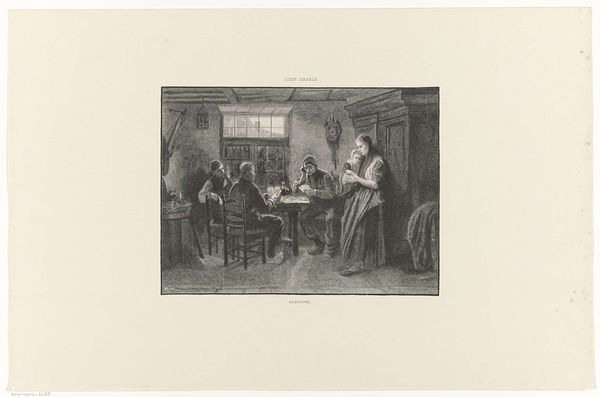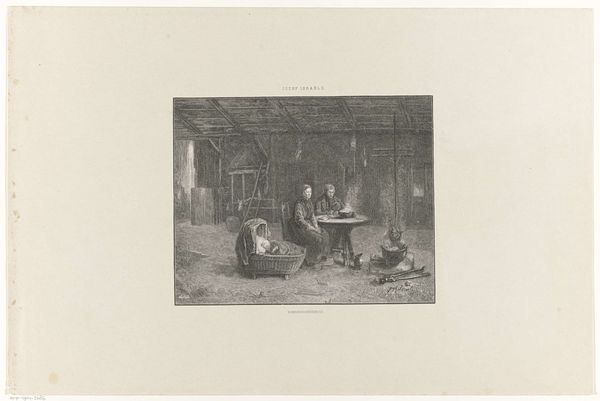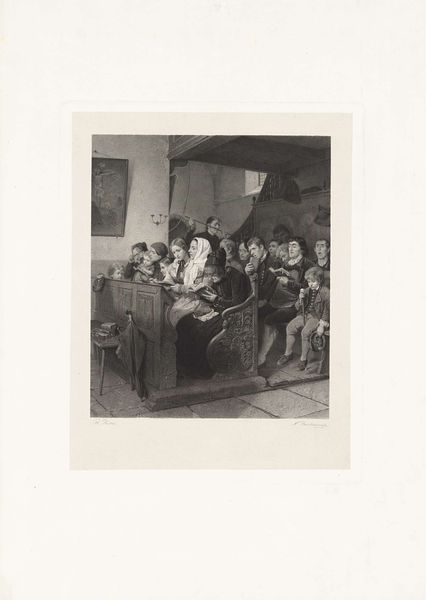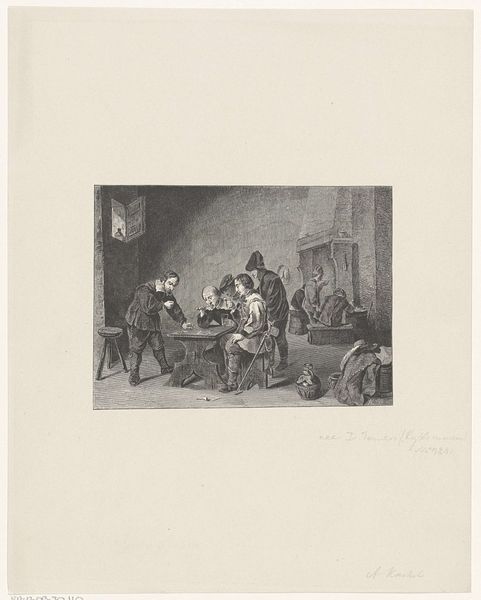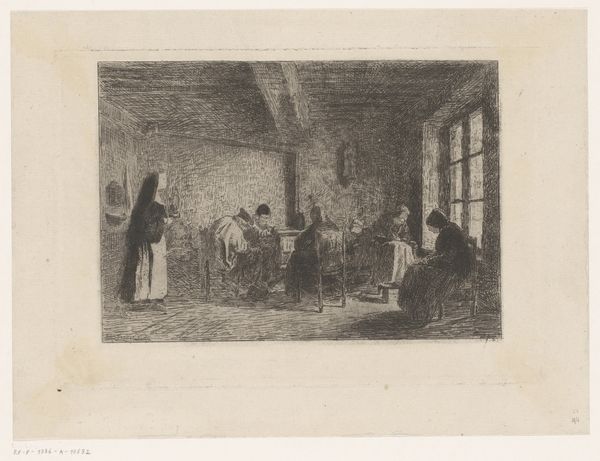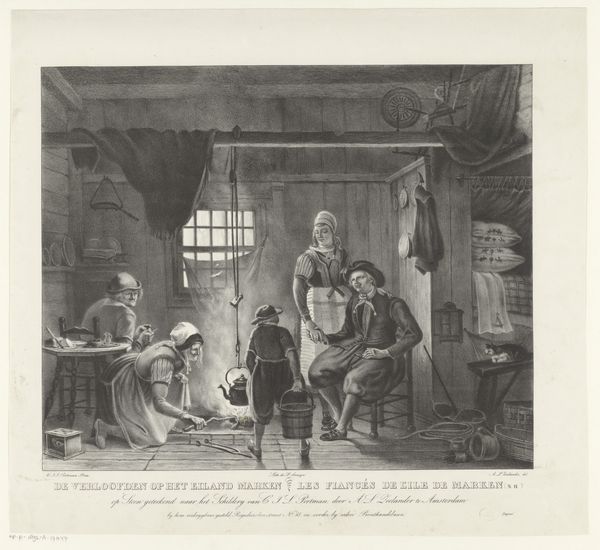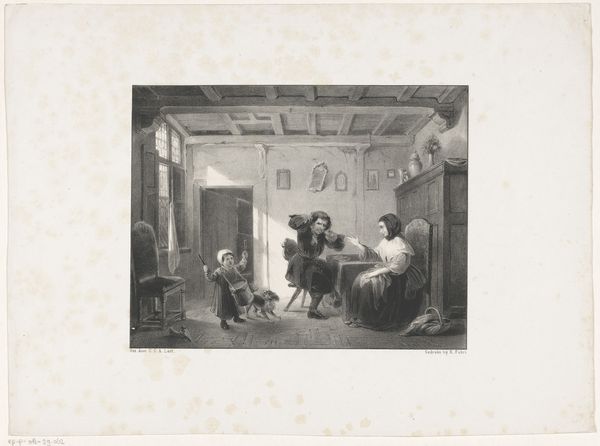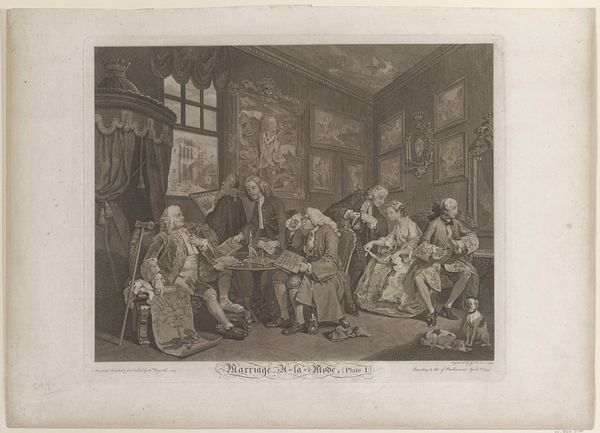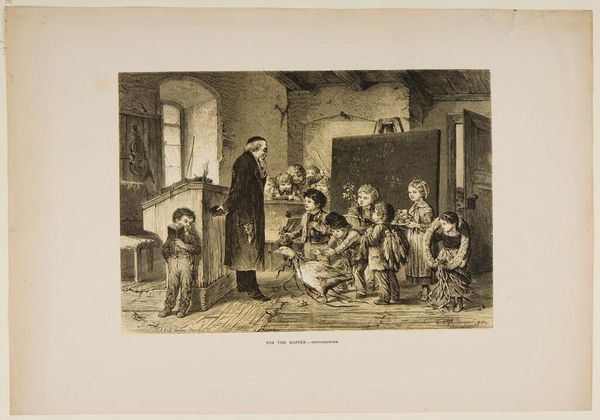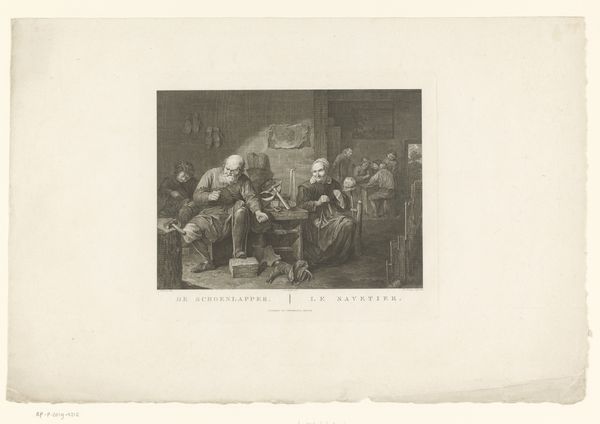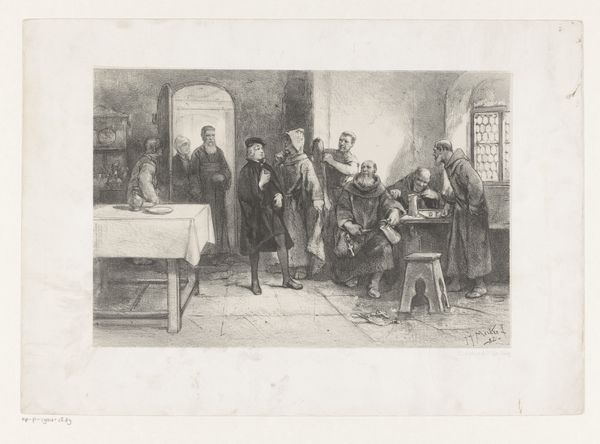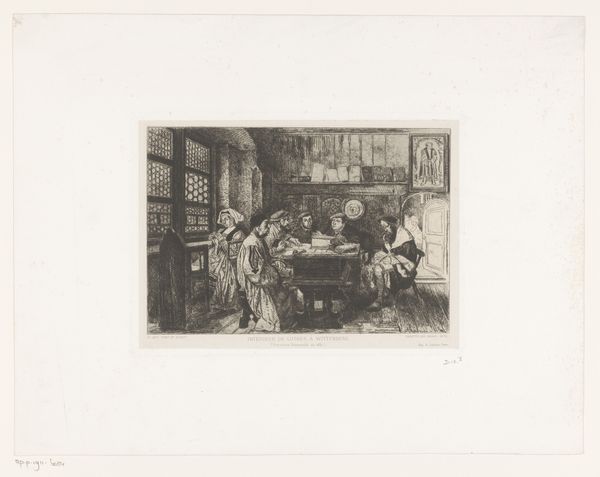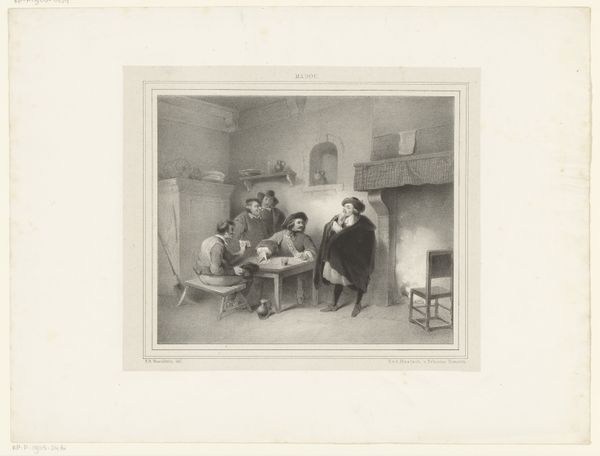
print, engraving
#
dutch-golden-age
# print
#
book
#
genre-painting
#
engraving
#
realism
Dimensions: height 332 mm, width 503 mm
Copyright: Rijks Museum: Open Domain
Editor: This print, "Zondagmiddag in den Achterhoek" or "Sunday Afternoon in Achterhoek," was created in 1883 by Emil Ost using engraving. It's incredibly detailed! There's a large group of people gathered indoors. What social dynamics do you see playing out in this piece? Curator: It captures a particular vision of community and knowledge. Consider the 19th-century context. Popular imagery, like prints and books, had immense power in shaping national identity. What class do these individuals appear to be? How does their dress signal it? Editor: They seem like working-class people, perhaps farmers? Their clothes look practical, and the setting isn’t opulent. It's also mostly a white gathering. Curator: Exactly. Ost's work reflects the trend of realism. Its unvarnished look made visible the contemporary Dutch society for those not within it. Images like this both reflect and constitute "the nation" in visual terms. Does the composition reinforce any social hierarchies? Editor: The person at the front stands while most others sit and appears to be reading or teaching, indicating they might be of elevated status. But their setting seems informal since their table looks like it might be a barrel. The women hold small children in arms as well, a normal touch. Curator: Precisely. Consider the historical context - How does this intimate genre scene then function to produce a "true" image of its people, as shaped by these institutions of power? Editor: It really brings together different ways that images form our perception of people and culture, and it's all in a book from long ago. It does makes you wonder what image-making looks like in the current culture.
Comments
No comments
Be the first to comment and join the conversation on the ultimate creative platform.
